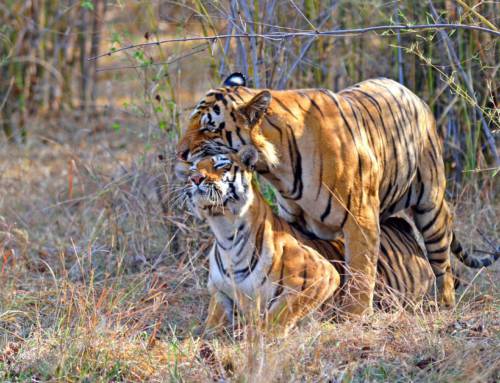Research Article: Marnewick, Kelly & Funston, Paul & Karanth, K.. (2008). Evaluating camera trapping as a method for estimating cheetah abundance in ranching areas. South African Journal of Wildlife Research – S AFR J WILDL RES. 38. 59-65. 10.3957/0379-4369-38.1.59.
Blog Author: Kavya Pandey
Key Highlights:
- A study in South Africa evaluated camera trapping as a method to estimate cheetah populations in ranching areas.
- The research was conducted in the Thabazimbi district of Limpopo Province, where ranches provide a unique yet challenging habitat for cheetahs
- Researchers deployed cameras at 12 key locations to capture individual cheetah sightings for a robust population analysis.
- The results revealed an estimated population of 6 to 14 cheetahs in the area, with a mean of seven individuals.
- This study suggests the use of camera traps to help count cheetahs on farmlands, which is important for protecting them and making informed conservation decisions.
The Cheetah (Acinonyx jubatus) is the world’s fastest land animal, capable of reaching speeds up to 100 km/h in short bursts. Unlike other big cats, cheetahs rely on speed rather than strength to hunt. They are solitary, live at low densities, and are highly elusive, making population monitoring a significant conservation challenge. Spotting a cheetah in the wild is rare; counting them is even harder. In South Africa’s ranching landscapes, where traditional methods face challenges, researchers are exploring camera traps as a non-intrusive way to estimate populations and support conservation.
Cheetahs are built for speed, but when it comes to studying them, researchers often find themselves struggling to keep up. Unlike lions, which lounge in the open, cheetahs are elusive. Their spotted coats help them blend seamlessly into the landscape, they are shy, live at low densities, and range across vast territories, making them incredibly difficult to count. Yet estimating their numbers is essential for effective conservation and management.
In South Africa, where many cheetahs roam privately owned cattle and wildlife ranches, tracking them is even more challenging. These ranches offer suitable habitat, with abundant prey and little competition from other large predators. However, many landowners see cheetahs as a threat to their livestock or game animals and are hesitant to support traditional research methods, particularly those that involve capturing and collaring the animals. So, how do scientists estimate cheetah populations in such places? Enter the camera trap, a simple yet powerful tool that allows researchers to monitor elusive wildlife without direct interference. In a study conducted in the Thabazimbi district of Limpopo Province, scientists tested whether camera trapping could provide reliable cheetah population estimates in ranching areas. They set up four camera traps at twelve different locations across a 300 km² area known for cheetah activity. Because each cheetah has a unique pattern of spots, like a fingerprint, researchers could identify individuals from the images.
Over the study period, they captured photos of five different cheetahs. However, estimating the total population wasn’t as simple as counting pictures. Some animals are naturally more camera-shy than others, and not every cheetah in the area had an equal chance of being photographed. To refine their estimates, researchers used capture-recapture analysis, a statistical method that accounts for how often individuals appear in photos while also ensuring the population remained “closed” during the study, meaning no cheetahs were born, died, arrived, or left. Taking these factors into account, the study estimated that between six and fourteen cheetahs lived in the area, with an average of around seven.
The results of the study were promising; camera trapping proved to be a relatively easy, non-intrusive way to monitor cheetahs in areas where other methods aren’t practical. With more traps and a larger survey area, this technique could provide crucial data for conservation, providing valuable insights into cheetah populations and their movements, ultimately aiding in their conservation efforts in ranching landscapes. By better understanding these magnificent creatures we can help ensure their future in the wild.
To know more, click here!



